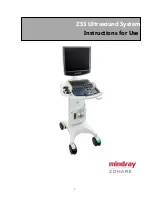
1-1
Introduction
Introduction
The Kurzweil Model K150X Expander (K150X) has built-in programs you can play directly, and editors with which you can
modify these programs to create an enormous range of sounds and playing/performance options.
In most synthesizers, the sound begins with a simple electronic waveform that is then filtered and shaped to produce the final
tone. The Kurzweil K150X Expander is also a synthesizer. However, instead of starting off with a simple electronic
waveform, the K150X starts with a computer model of an acoustically rich instrumental sound. These models, which we call
voices, are created by a Contoured Sound Model
, which produces the rich, authentic tones for which Kurzweil Music
Systems has become famous.
Programs, Regions, and Layers
In addition to the voices, the K150X offers many sound-modifying resources. By using these resources, we are able to
change a basic voice to create a great variety of new tone colors. The resources are referred to as modifiers. A voice,
together with its associate modifiers, is called a layer.
With the K150X, you can combine layers to form a composite tone color, and then assign that combination of layers to a
region. A region is one group of keys into which the K150X divides the incoming MIDI keyboard information. The K150X
enables you to set up one, two, or three keyboard regions.
A complete keyboard setup is called a program. The program tells where the regions are, which layers are in each region,
and which voice and modifier values are in each layer. The programs are numbered from 0 to 255. A given program may be
selected by the K150X’s front panel, or by a MIDI program change command.
Thus, programs are built up like the branches of a tree. The program is the tree itself, the regions are parts of the tree’s
"trunk", and the layers are "branches" that are attached to the trunk. To continue the analogy, you can think of the K150X as
a "forest" of up to 255 trees. The size of the forest is fixed by the amount of memory in the K150X. You can have up to 255
"trees," but if you build up big trees with a lot of "branches" (that is, a complex program with a lot of layers), it will take
more space in the memory than smaller trees with fewer layers, and you will be able to fit fewer than the maximum of 255 in
your "forest" of programs.
The K150X allows you to build up a program of one, two, or three regions, each of which may have up to seven layers. In
working on your programs, you may set up, change, or remove just a layer, a region of layers, or an entire program.
The Voices
Many voices are built in to every K150X. A list of the resident voices is given in Chapter 8 of this manual. In addition,
every K150X contains voice expansion slots into which supplied voice block integrated circuits are inserted. Additional
expansion slots are also supplied so that you can add more voice block integrated circuits later on.
All voices are instantly available for playing. That is, there is no waiting time to play any of the voices that you have
installed within the instrument.
The Modifiers
Modifiers change a voice, or change the manner in which the voice responds to MIDI control signals. Modifiers may be
applied at the layer level, program level, or be instrument-wide. A modifier which is applied at the layer level affects only
that layer, a modifier applied at the program level affects all layers in all regions defined by the program, and an instrument-
wide modifier affects all the programs in the K150.
Instrument-wide modifiers include:
•
MIDI assignments
•
Master transposition, tuning, and intonation






































